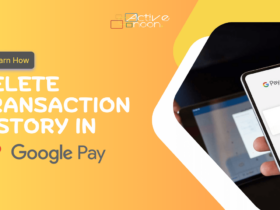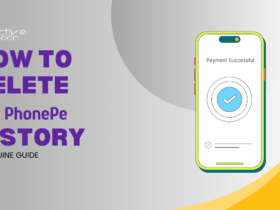An eSIM, or SIM card embedded in a mobile device, allows you to connect to any operator offering eSIM services. Additionally, the e-SIM can be used without a genuine SIM card and performs identically to a normal SIM card. Since it is already pre-loaded in the device, the “eSIM profile” of a new operator must be installed in order to activate it. In actuality, it is a progression from the conventional SIM card.
More and more smartphones, tablets, and PCs are coming equipped with an e-SIM card. The eSIM commonly referred to as an embedded SIM, is not exactly a new technological advancement. However, it is quickly gaining acceptance because only eSIMs are utilized in the US by fitness-focused wearables and smartphones such as the Google Pixel series, Samsung Galaxy S and Z-series, and Apple iPhones, particularly the iPhone 14.
How does eSIM function?
On a device that is eSIM-compatible, you can rapidly install an eSIM profile (provided by operators or carriers) so that you can buy an e-SIM data plan when you need one while you’re out and about. Additionally, you can use various operators and sign up simultaneously for a variety of data plans if you’re traveling or working from a distance. When compared to your usual carrier, Ubigi, for instance, offers roaming savings of up to 90% in 190 countries. As a substitute for unreliable or dangerous Wi-Fi, we also offer one-time and recurring data plans. The virtual SIM is another name for the embedded universal circuit card, commonly referred to as the eSIM or eUICC.
An eSIM is composed of a few components that are now integrated into the inner workings of your phone, much like a traditional SIM card. Additionally, they perform the same function, acting as a unique identification that enables telecom operators and other users to locate your individual smartphone when they call or text you.
What are eSIM’s big advantages?
Accessibility
Simplicity is the main advantage. If you don’t frequently deal with switching SIM cards or phones, the switch to eSIMs won’t be required. Additionally, it will save you the trip to a telecom retailer or service facility should you travel to another state or country and want to switch to a new operator. Having multiple SIM profiles stored in your eSIM allows you to switch between them without physically switching cards or repeatedly activating a SIM.
Safety
When a phone with a physical SIM card is misplaced, thieves might not be able to use it because of lock screens, biometric activation, and remote locking capabilities. They can still take out your SIM card and put it in another unlocked phone, which gives them the ability to call you, send you an SMS, or, worse yet, use your phone number to get into your social media or bank accounts. This process is quicker and easier for attackers than you may think. An eSIM prevents this from happening because there isn’t a physical component that needs to be taken out and inserted into another device.
International Availability
If you travel regularly, you ought to use an eSIM. Regardless of how frequently or abruptly you relocate, you can always stay connected. With eSIM, traveling is made easier, especially for those who switch between the two countries frequently. Business travelers and ex-pats who frequently visit their home country can easily switch from their local operator to an eSIM provider like Ubigi while keeping their two lines active. Mobile connectivity is the focus of Ubigi’s eSIM service—anytime, anywhere! eSIM provides you with several advantages over traditional physical SIM cards.
Simple Connection
Anywhere you are, a mobile device that supports eSIM can quickly connect to you. To quickly connect to the Internet, all you need is your eSIM profile. Your installed eSIM profile will always be available and ready for usage on your device.
Also read – Biometric Screening – Restricting Spoofing Attacks in Organizations
What are eSIM’s big disadvantages?
Only high-end phones are supported
Only more expensive smartphones, such as the Apple iPhones, Google Pixel smartphones, and Samsung Galaxy S and Z series, which can all be prohibitively expensive for the average customer, currently enable eSIM. By switching to an eSIM, users will also be restricted to a far smaller selection of devices that support the technology.
Unusable in countries that don’t support eSIM
In a country where telecom companies have not yet embraced the technology, you cannot use an eSIM phone. This isn’t an issue if your phone works with both eSIM and regular SIM cards, but it is with devices like the iPhone 14 US model, which only works with eSIM.
Telcos are more powerful
Although utilizing an eSIM might save you from making the initial trip to the telecom provider’s store to get your SIM card, you should anticipate the constant need to deal with your operator whenever you want to switch phones. Even though the majority of people might not see this as an issue, many are concerned about the power this gives operators, who might subsequently decide to increase eSIM plan prices or switch phones. People who switch phones frequently might also not want to contact the operators.
Emergency situations
If your phone malfunctions, loses power, tips over, or just smashes its screen, communication will be completely shut off. This is the case with eSIMs. While this is happening, standard SIM cards can be readily taken out of the damaged phone and inserted into a backup device or a different phone.
Why is having an eSIM necessary?
These will depend on your requirements and usage patterns. If they transition to an eSIM, most people who now use a physical SIM won’t notice much of a difference. In the event that their devices are stolen, users can use eSIM to lock their identities to their devices if they are concerned about the security and privacy of their SIM cards. Customers would only be able to use luxury handsets, which are significantly more expensive than entry-level or mid-range models, despite the fact that using eSIMs is now free.
The iPhone 14 series will support both eSIM and a SIM card slot, allowing you to choose between the two as you see fit. You will be the only person who needs to change to an eSIM if you buy an iPhone 14 series device from the US. Expect physical SIM cards to continue to be used for the foreseeable future because the majority of smartphones in the lower price range rely on technology and because they have advantages over digital SIM cards, for which there isn’t yet a solution. Whether eSIMs will totally replace physical SIM cards is an issue that may be answered in the future.



















Leave a Reply